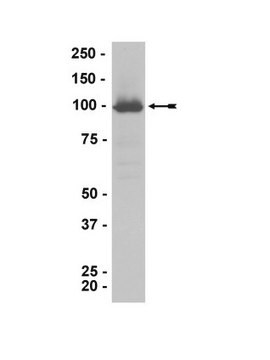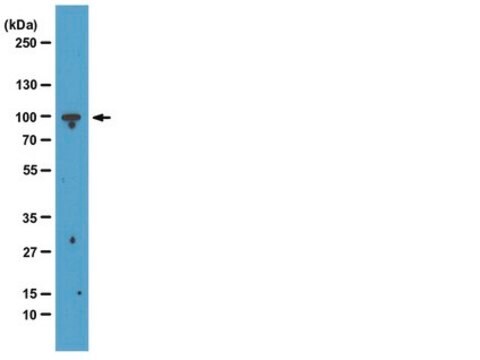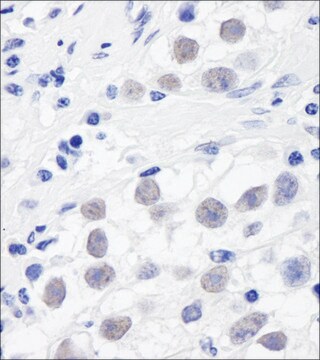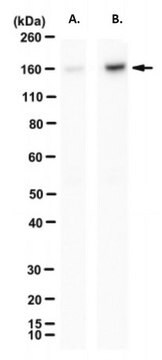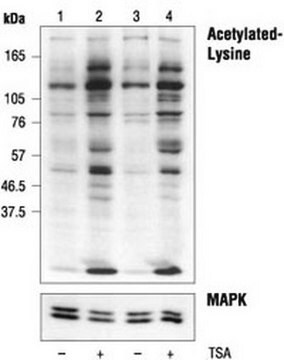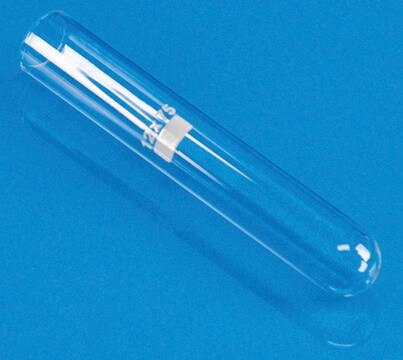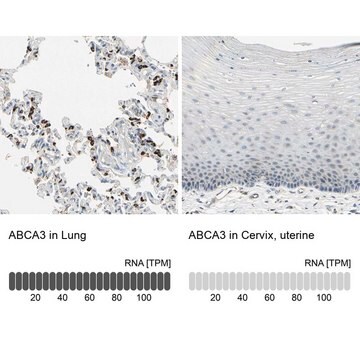MABE1073
Anti-acetyl SMC3 Antibody (Lys105/106), clone 21A7
clone 21A7, from mouse
Synonyme(s) :
Structural maintenance of chromosomes protein 3, Lys105/106 acetylated, Bamacan, Lys105/106 acetylated, Basement membrane-associated chondroitin proteoglycan, Lys105/106 acetylated, Chondroitin sulfate proteoglycan 6, Lys105/106 acetylated, Chromosome-as
About This Item
Produits recommandés
Source biologique
mouse
Niveau de qualité
Forme d'anticorps
purified immunoglobulin
Type de produit anticorps
primary antibodies
Clone
21A7, monoclonal
Espèces réactives
human
Réactivité de l'espèce (prédite par homologie)
nonhuman primates (based on 100% sequence homology), Xenopus (based on 100% sequence homology), bovine (based on 100% sequence homology), mouse (based on 100% sequence homology), rat (based on 100% sequence homology)
Technique(s)
ChIP: suitable (ChIP-seq)
ELISA: suitable
western blot: suitable
Isotype
IgG2bκ
Numéro d'accès NCBI
Numéro d'accès UniProt
Conditions d'expédition
ambient
Modification post-traductionnelle de la cible
acetylation (Lys105/Lys106)
Informations sur le gène
human ... SMC3(9126)
Description générale
Spécificité
Immunogène
Application
Chromatin Immunoprecipitation (ChIP) Analysis: A representative lot detected enhanced SMC3 occupancy at target chromatin sites in HDAC8-null HCT116 cells than wild-type HCT-116 cells (Rahman, S., et al. (2015). Proc. Natl. Acad. Sci. U. S. A. 112(36):11270-11275).
ChIP-seq Analysis: A representative lot detected SMC3 chromosome 11 enrichment sites, including 81% of Rad21 target sites and 70% of Esco1 target sites, by ChIP-seq (Rahman, S., et al. (2015). Proc. Natl. Acad. Sci. U. S. A. 112(36):11270-11275).
Western Blotting Analysis: A representative lot detected SMC3 Lys105/106 acetylation in HeLa cells. ESCO1 or ESCO2 depletion by shRNA treatment reduced SMC3 Lys105/106 acetylation level, while dual ESCO1/2 depletion resulted in most profound SMC3 Lys105/106 acetylation reduction (Rahman, S., et al. (2015). Proc. Natl. Acad. Sci. U. S. A. 112(36):11270-11275).
Epigenetics & Nuclear Function
Qualité
Western Blotting Analysis: A 1:1,000 dilution of this antibody detected a reduced SMC3 Lys105/106 acetylation in 10 µg of lysate from N-acetyltransferase ESCO1-knockout human retinal epithelial pigment (REP) cells than in lysate from wild-type REP cells.
Description de la cible
Forme physique
Stockage et stabilité
Autres remarques
Clause de non-responsabilité
Vous ne trouvez pas le bon produit ?
Essayez notre Outil de sélection de produits.
Code de la classe de stockage
12 - Non Combustible Liquids
Classe de danger pour l'eau (WGK)
WGK 1
Point d'éclair (°F)
Not applicable
Point d'éclair (°C)
Not applicable
Certificats d'analyse (COA)
Recherchez un Certificats d'analyse (COA) en saisissant le numéro de lot du produit. Les numéros de lot figurent sur l'étiquette du produit après les mots "Lot" ou "Batch".
Déjà en possession de ce produit ?
Retrouvez la documentation relative aux produits que vous avez récemment achetés dans la Bibliothèque de documents.
Notre équipe de scientifiques dispose d'une expérience dans tous les secteurs de la recherche, notamment en sciences de la vie, science des matériaux, synthèse chimique, chromatographie, analyse et dans de nombreux autres domaines..
Contacter notre Service technique